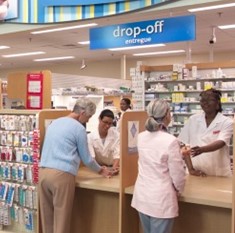The IMS Institute for Healthcare Informatics released its annual Medicines Use and Spending in the U.S. report.
Spending Report
The report showed that spending on prescription drugs in the United States rose 12% over the last year, mostly fueled by new and costly drugs for cancer and hepatitis C. United States oncology spending reached $39.1 billion in 2015, an 18% jump, and it is likely that cancer spending will continue to rise as new treatments are developed and sent to market. Spending on treatment for autoimmune diseases rose 28% to $30.2 billion. Hepatitis C drugs saw a spend of $18.8 billion from United States payers in 2015, primarily because of Gilead’s Harvoni and Sovaldi. Prescription costs for these drugs have begun to fall over the past twelve months, and it is likely that the near-term costs will eventually be offset by the longer term savings realized by curing people with the liver-destroying disease, and potentially allowing them to be fully-functioning members of society.
More than half of the spending growth, interestingly, was because of medicines that were recently FDA approved, in either 2014 or 2015. Prescriptions approved in those years resulted in costs of approximately $151 billion, a 20% increase from a year earlier.
However, even with all of that taken into account, the net price growth after discounts last year was an estimated 2.8%. That is compared to 2014, when the average list price increase for patented brands was 14.3%, versus net price growth of 5.1%.
Patent Expirations and Biosimilars
This past year, several exclusivity patents expired, including exclusivity for: Suboxone (buprenorphine), Neupogen (filgrastim), and Copaxone (glatiramer acetate injection). In addition to recent patent expirations, the first biosimilar approved by the FDA, Sandoz’ Zarxio (a biosimilar to filgrastim) was approved in 2015. The price difference between the biosimilar and the reference product was 16% based on invoice prices. At the end of 2015, seven applications were pending in the FDA’s biosimilar pathway.
Additionally, there are several high-profile patents that are set to expire soon. For example, AstraZeneca’s heart drug Crestor, Pfizer’s pain drug Lyrica, and Pfizer’s erectile dysfunction pill Viagra. These three pills alone collectively brought in sales of almost $10 billion in 2015. Once those patents expire, it is likely that drug spending will continue to decrease since there will be more competition on the market.
Market Growth
The report also showed signs that market forces are keeping growth relatively low: as previously mentioned, the average net price increase for branded drugs was just 2.8% in 2015, versus 12.4% using wholesale prices. Further, growth for wholesale prescriptions was 12% in 2015, which was down from the 14% registered in 2014.
Late last year, pharmacy benefit managers and health insurers began to engage in more “aggressive tactic” to restrict access to certain drugs, unless manufacturers agreed to large discounts. In 2015, concessions like that amounted to $115.3 billion, more than double the $52.4 billion in 2009.
What Does it Mean?
While this report could add some fodder to the arguments of people who think the cost of drugs is too expensive, it also shows that drug costs are moderating because of the competitive marketplace where large, powerful purchasers negotiate aggressively and generic utilization rates are nearly ninety percent.
Murray Aitken, executive director of the IMS Institute for Healthcare Informatics, backed that idea up, stating, “That reflects the new dynamics in the marketplace, where we have heightened competition in several major therapy areas, including diabetes, with manufacturers taking price concessions through rebates.”
Aitken also highlighted the idea that there are continuing to be new drugs, new brands, new biosimilars, and other solutions, on a frequent basis. “About five years ago, people were questioning whether the [research and development] pipeline was dry. We don’t hear that question any longer.” He is expecting that there will be between forty-three and forty-nine new active substances will be launched annually for the next five years.
In an emailed release from the Pharmaceutical Researchers and Manufacturers of America, the Senior Vice President of Communications Robert Zirkelbach stated,
This is yet another report confirming how the competitive biopharmaceutical market works to control costs. After factoring in discounts and rebates negotiated by payers, IMS Health found net prices for brand medicines increased just 2.8 percent in 2015, down from 5.1 percent the prior year.
Separately IMS Health projects net spending growth on medicines will continue to moderate to 4 to 7 percent annually, in line with overall U.S. health care growth through 2020. Similarly, CVS Health and Express Scripts recently reported that actual medicine spending growth in 2015 was less than half from the prior year. This is due to a competitive marketplace for medicines where large, powerful purchasers negotiate aggressively and generic utilization rates are nearly 90 percent. At the same time, critical advances continue in areas such as cancer, rare diseases and heart disease.
The Future
As previously mentioned, several well-known and popular drugs are scheduled to lose their patent protection soon. Losing that protection, combined with biologics that are slowly making their way to market, will start to erode the base of expensive drugs.
Given the contentious political environment, it is unlikely that action will be taken in the political arena any time soon to handle the perceived rise of prescription drug pricing. However, with new drugs and biosimilars coming to the market, and with exclusivity patents expiring, the future rise or fall of drug prices is difficult to predict. The one thing that is almost certain is that drug prices will remain in the spotlight for the immediate future.

